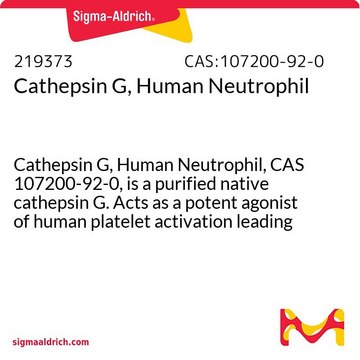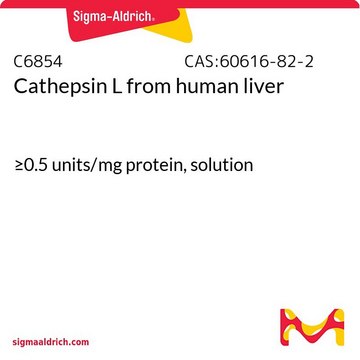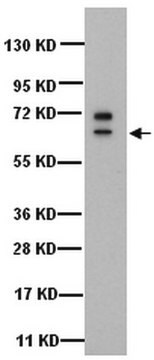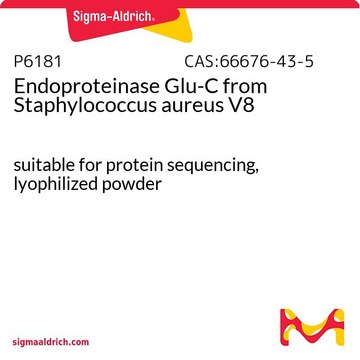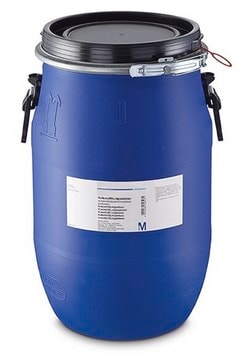219402
Cathepsin L, humane Leber
Cathepsin L, Human Liver, CAS 60616-82-2, is a native, the most potent of all the lysosomal proteinases. Plays a major role in the proteolysis of both cellular and endocytosed macromolecules.
Synonym(e):
CTSL, CTSL1, Human Cathepsin L, Major excreted protein (MEP)
About This Item
Empfohlene Produkte
Biologische Quelle
human liver
Qualitätsniveau
Form
liquid
Hersteller/Markenname
Calbiochem®
Lagerbedingungen
OK to freeze
avoid repeated freeze/thaw cycles
Methode(n)
activity assay: suitable
Eignung
suitable for molecular biology
Anwendung(en)
life science and biopharma
Versandbedingung
wet ice
Lagertemp.
−70°C
Angaben zum Gen
human ... CTSL(1514)
Allgemeine Beschreibung
Cathepsin L, Human Liver, native, is the most potent of all the lysosomal proteinases. Cathepsin L (CTSL) belongs to the papain subfamily of cysteine proteases and is mainly located in endolysosomal vesicles.
Biochem./physiol. Wirkung
Verpackung
Warnhinweis
Einheitendefinition
Physikalische Form
Angaben zur Herstellung
Rekonstituierung
Sonstige Hinweise
Rechtliche Hinweise
Lagerklassenschlüssel
12 - Non Combustible Liquids
WGK
WGK 2
Analysenzertifikate (COA)
Suchen Sie nach Analysenzertifikate (COA), indem Sie die Lot-/Chargennummer des Produkts eingeben. Lot- und Chargennummern sind auf dem Produktetikett hinter den Wörtern ‘Lot’ oder ‘Batch’ (Lot oder Charge) zu finden.
Besitzen Sie dieses Produkt bereits?
In der Dokumentenbibliothek finden Sie die Dokumentation zu den Produkten, die Sie kürzlich erworben haben.
Unser Team von Wissenschaftlern verfügt über Erfahrung in allen Forschungsbereichen einschließlich Life Science, Materialwissenschaften, chemischer Synthese, Chromatographie, Analytik und vielen mehr..
Setzen Sie sich mit dem technischen Dienst in Verbindung.